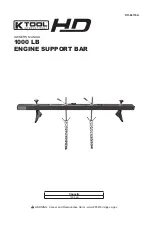Reviews:
No comments
Related manuals for HT595881

B450
Brand: Taurus Pages: 28

HDS Series
Brand: Kärcher Pages: 54

2 Series
Brand: ABB Pages: 85

263
Brand: Keithley Pages: 42

P4
Brand: JB-Lighting Pages: 60

NPL20
Brand: Nitecore Pages: 4

MTSP
Brand: Hammer Strength Pages: 18

JEFTRCH21
Brand: Jefferson Pages: 2

Lightning Bolt
Brand: Lighthouse Pages: 2

PulseDose LT PD1000
Brand: DeVilbiss Pages: 58

EK-1
Brand: ZAMST Pages: 14

MIDI LOOPER
Brand: Future Artist Pages: 42

FC3160TCD
Brand: KUHN Pages: 112

G-SND-024-E
Brand: Federal Signal Corporation Pages: 31

Rotor-Gene Q MDx CE
Brand: Qiagen Pages: 208

OWUACAMP915
Brand: Microsport Pages: 7

HFW Series
Brand: unicraft Pages: 4

HD KTI-62116A
Brand: K Tool International Pages: 4

















